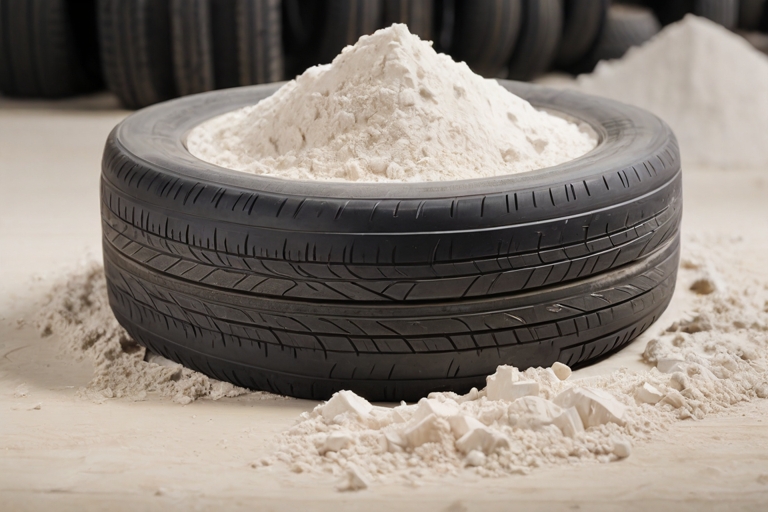Precipitated silica, a very fine powder with a high specific surface area, plays a crucial role as a reinforcing agent in the rubber and tire industry. It significantly enhances the mechanical, physical, and chemical properties of rubber compounds.
Effects of Precipitated Silica on Rubber and Tires
- Increased Tensile Strength and Tear Resistance: Silica forms strong bonds with rubber molecules, enhancing the tensile strength and tear resistance of the compound.
- Improved Abrasion Resistance: The presence of silica in rubber increases its abrasion resistance, which is particularly important for tires that are in direct contact with the road surface.
- Reduced Rolling Resistance: One of the most significant applications of silica in tires is to reduce rolling resistance. This translates to lower fuel consumption and reduced emissions.
- Improved Adhesion: Silica enhances the adhesion between rubber and other tire components, such as steel and nylon, improving the overall performance of the tire.
- Increased Heat Resistance: Silica increases the heat resistance of rubber, which is especially beneficial in demanding and prolonged driving conditions.
- Reduced Hysteresis: Silica reduces hysteresis, decreasing heat generation in the tire and thus increasing tire lifespan.
Mechanism of Action of Precipitated Silica
Precipitated silica creates a three-dimensional network within the rubber, reinforcing its structure. This network prevents the free movement of rubber molecules and increases the strength and hardness of the compound. Additionally, the high specific surface area of silica increases the contact area between silica particles and rubber molecules, further improving the mechanical properties of the compound.
Desired Properties of Precipitated Silica for the Tire Industry
- Particle Size: The particle size of silica should be such that it can be evenly dispersed within the rubber and create a suitable three-dimensional network.
- Specific Surface Area: A high specific surface area increases the contact area between silica particles and rubber molecules, improving the mechanical properties of the compound.
- Surface Structure: The surface structure of silica also affects the properties of the compound. A surface with more hydroxyl groups creates better adhesion with rubber molecules.
Conclusion
Precipitated silica, as a crucial reinforcing agent in the rubber and tire industry, plays a key role in improving the properties and performance of final products. Given the increasing importance of reducing fuel consumption and emissions, the use of precipitated silica in the production of low-rolling-resistance and high-performance tires has gained significant attention
